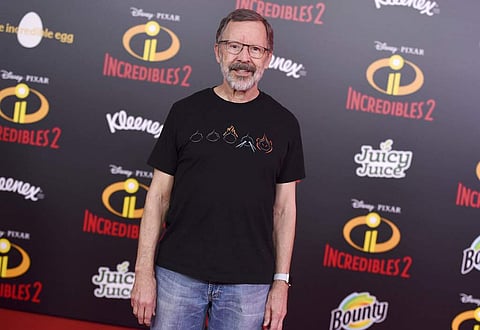
- LIFESTYLE
- FASHION
- FOOD
- ENTERTAINMENT
- EVENTS
- CULTURE
- VIDEOS
- WEB STORIES
- GALLERIES
- GADGETS
- CAR & BIKE
- SOCIETY
- TRAVEL
- NORTH EAST
- INDULGE CONNECT

The technology that animated movies like Toy Story and enabled a variety of special effects is the focus of this year’s Turing Award, the technology industry’s version of the Nobel Prize.
Patrick Hanrahan and Edwin Catmull won the prize for their contributions to 3D computer graphics used in movies and video games.
Edwin Catmull was hired by legendary filmmaker George Lucas to head the computer-technology division that became Pixar when Apple founder Steve Jobs bought it. Patrick Hanrahan was one of Catmull's early hires at Pixar, now part of Disney.
Together, the two worked on techniques that made graphics in movies like Toy Story look more lifelike, even though Hanrahan left Pixar years before the studio released that film. Catmull is the former president of Pixar and worked there for more than three decades.
“What makes skin look like skin? What makes a tree look like a tree? You have to understand the structure of material and how light interacts with it,” Hanrahan said in an interview.
Only then is it possible to translate that understanding of how the physics of curved surfaces — our hands, our noses — works with light into the 100,00-plus frames that make up a movie.
Hanrahan's RenderMan software helped produce Toy Story in 1995 and then a string of Pixar films like Up, Monsters Inc., Finding Nemo and Wall-E.
It was also the backbone of CGI special effects in live-action movies such as Titanic and the Lord of the Rings films.
The Association for Computing Machinery, which awards the prize, says filmmakers used RenderMan software in nearly all of the last 47 movies nominated for a visual effects Academy Award.
The technology has also indirectly helped the artificial-intelligence field. The chips that were developed for video-game graphics were so powerful that they could then be used to train AI algorithms.
Black Widow goes dark: Film postponed indefinitely, other Marvel releases also on hold
COVID-19: All cinema halls in West Bengal to remain shut till March 31, film shoots suspended
COVID-19: Film, TV, digital production halt in India until the end of March
Ticket sales dive at US box office; lowest turnout in 20 years, many theatres opt to close down
Soldier of fortune: Vin Diesel chats about playing a complex, emotional superhero as Bloodshot
COVID 19: Hollywood movies that have been pushed back and new release dates
Actress Trisha walks out of Chiranjeevi's film Acharya citing creative differences
More Bollywood push-backs: Ranveer, Vicky, Farhan's films get new release dates